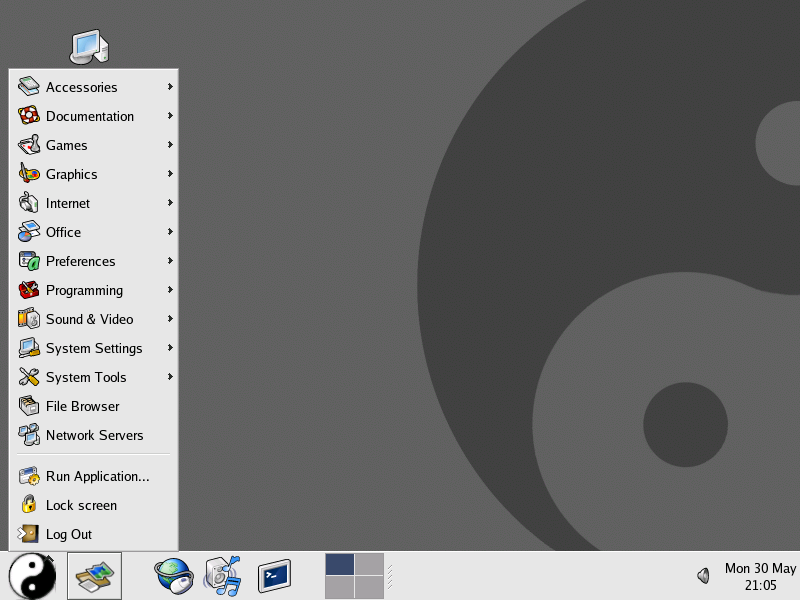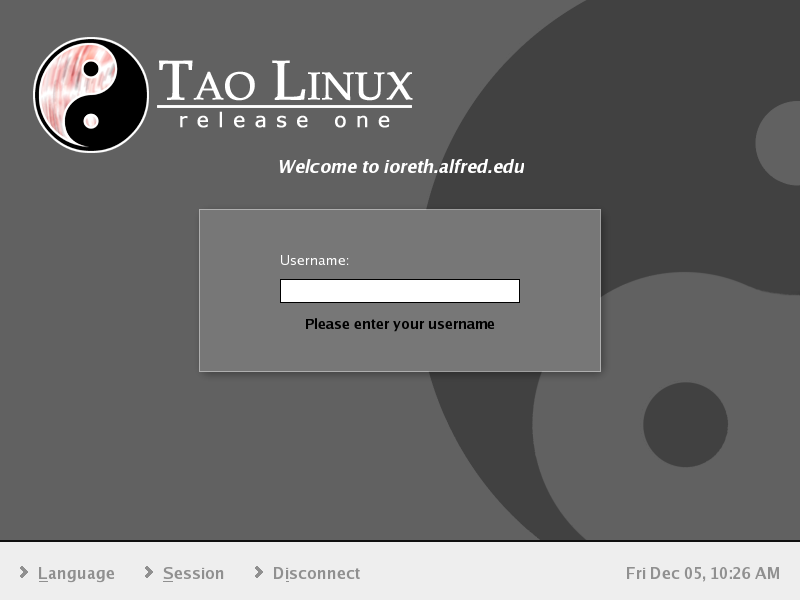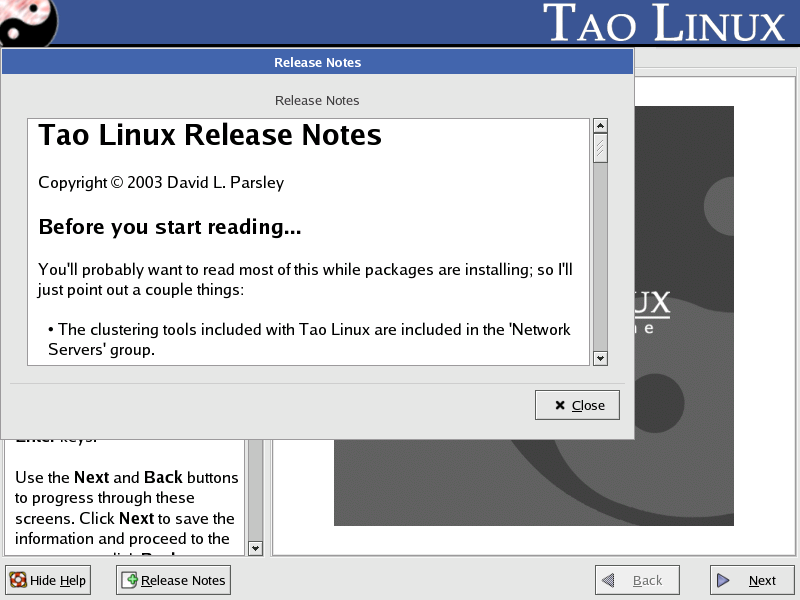Installing
These are some of the most common methods for installing Tao Linux:
Fresh install
- download isos + nfs install
The easiest thing to do is: download the binary dvd iso and boot.iso to a server, then nfs export that directory. Boot the boot.iso on the machine to be installed, select 'nfs', and point to the exported directory. The installer will automatically loopback mount the dvd iso and install from there. - (ftp installs no longer supported)
In addition to these, many of the other methods and features supported by anaconda will work. Users of early releases used the 'vnc' feature, (see the Release Notes), booting via PXE, normal nfs install from a full install tree, and of course the plebian 'burn all the CDs and boot the first one'.
Features
- Includes gcj-compiled Eclipse IDE
- Includes clustering tools
- Yum with protectbase patch for safer use of 3rd-party repos
- Ports to multiple architectures
- Supports ACL's in ext3, nfs and Samba
- Mostly compatible with Red Hat Enterprise Linux 3
- Binary RPMs verified against RHEL3 originals
- Free as in speech and beer
- Security updates (in SRPM form, at least) available into 2008
In addition, Tao Linux inherits a great deal of functionality features from the RHEL3 sources, see the Release Notes for more.
About Tao Live
From TaoLinux
Tao Live is an ideal distribution for beginners. Based on Tao Linux 4, Tao Live is a bootable CDROM with a collection of software and automatic hardware detection. It is not necessary to install anything on your hard disk to use Tao Live.
Features
- Created with The ADIOS Project developpement tools.
- Tao Live uses a Squash filesystem to fit 2 Gb of programs into a standard bootable CD.
- OpenOffice.org, firefox, gaim, xmms, k3b and many other programs are included.
- A few booting options are currently available.
Documentation
A begineer's guide for Linux desktop users was written by Tao Live author. This guide is available both in English and French.
Each Tao Live release contains the scripts used to build it. For more information on how to rebuild Tao Live, take a look at the README file located inside the adk directory on the Tao Live CDROM. The same directory also contains the full list of programs installed on Tao Live CDROM.
Screenshots [Tao Live]
Startup screen
This is the syslinux opening splash screen displayed right after the BIOS has completed system initialization.
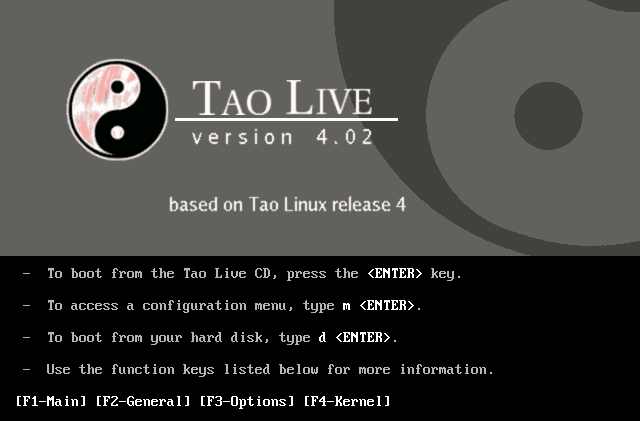
Desktop environment
The default desktop environment under Tao Live is GNOME. KDE desktop environment is also available.
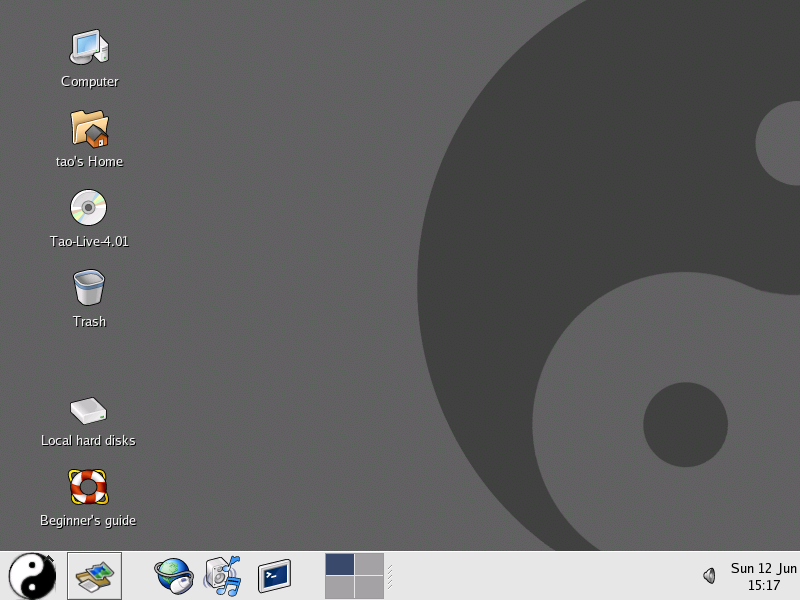
Main menu
The main menu in Tao Live
